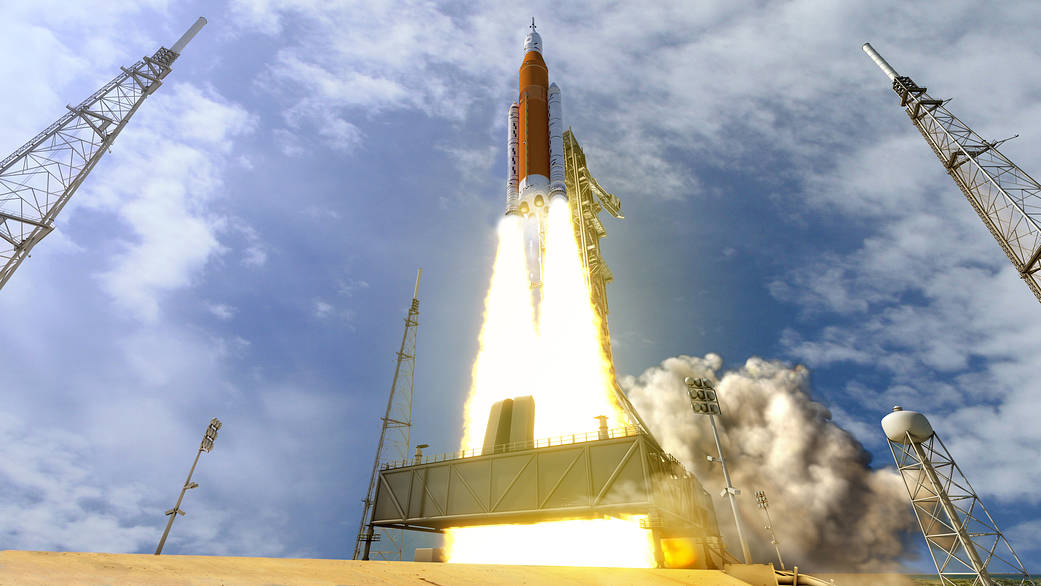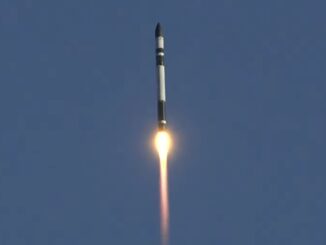STORY WRITTEN FOR CBS NEWS & USED WITH PERMISSION

The powerful Space Launch System rocket being built for NASA’s Artemis moon program by Boeing, using solid-propellant boosters from Northrop Grumman and main engines from Aerojet Rocketdyne, will have cost more than $18 billion by the time it blasts off on its maiden flight in 2021, NASA’s Office of Inspector General reported Tuesday.
Already running two years behind schedule and some $2 billion over budget because of technical problems, changing requirements and contractor performance, potential delays for the rocket’s second mission — the first to carry astronauts — could push the SLS program’s cost to nearly $23 billion by 2023, the OIG reports.
“As of December 2019, NASA had obligated $14.8 billion on the SLS Program and is expected to spend a total of $17.4 billion by the Artemis 1 launch date,” the OIG report said, referring to an earlier November 2020 launch target. “Besides Artemis 1 costs, these amounts include preparation for Artemis 2 and 3, new engine development and improved boosters.
“However, as of January 2020, NASA anticipates the Artemis 1 launch date will slip to spring 2021, over two years later than its initial planned launch date, with total SLS program costs rising to $18.3 billion by that time.”
If the second Artemis launch date slips to 2023, additional costs will be incurred driving the SLS program price tag to around $22.8 billion, the report said.
In an October 2018 audit, the OIG blamed most of the delays to date on “management, technical and infrastructure issues driven mostly by Boeing’s poor performance.” While Boeing and the other major SLS contractors have implemented changes to improve performance, the OIG said Tuesday NASA “continues to struggle managing SLS program costs and schedule.”
The Artemis program calls for landing astronauts near the south pole of the moon by the end of 2024, a target date established by the Trump administration that is four years earlier than NASA had been planning.
To get there, the agency plans to launch astronauts aboard Orion crew capsules, built by Lockheed Martin, using two-stage SLS rockets, the most powerful boosters ever built.
The initial block 1 version of the rocket will generate a staggering 8.8 million pounds of thrust at liftoff using two Northrop Grumman solid-propellant boosters and four upgraded Aerojet Rocketdyne RS-25 main engines left over from the space shuttle program.
For its first three flights, the SLS rocket will be equipped with an interim cryogenic upper stage utilizing a single hydrogen-fueled RL-10 engine. The 322-foot-tall block 1 SLS will be capable of boosting 70 tons to low-Earth orbit or 26-ton payloads to the moon.
Follow-on versions, using a more powerful Exploration Upper Stage with four RL-10 engines, upgraded solid-propellant boosters and higher-thrust main engines will generate nearly 12 million pounds of thrust to propel payloads weighing more than 45 tons to the moon.
NASA managers had been hoping to launch the first SLS on an unpiloted test flight late this year, but by the end of 2019 it was clear the flight was slipping well into 2021. The Artemis 2 mission, carrying astronauts beyond the moon and back, is targeted for the 2022-23 timeframe followed by an attempt to land the first woman and the next man on the moon by the end of 2024.
The core stage of the SLS rocket needed for the Artemis 1 test flight is now at the Stennis Space Center in Mississippi, mounted in a massive test stand for six months of work to check out its myriad systems, culminating in a full-duration engine firing known as a “green run.”
If all goes well, the huge stage will be shipped to the Kennedy Space Center late this year for launch preparations.
Based on its review of SLS costs to date, the OIG “found that the program exceeded its Agency Baseline Commitment (ABC) — that is, the cost and schedule baselines committed to Congress against which a program is measured — by at least 33 percent at the end of fiscal year 2019.”
The $17.4 billion cited as NASA’s SLS cost through Artemis 1 included $6 billion in development costs that NASA did not track as part of its baseline commitment. The $2 billion in cost overruns was attributed to a variety of issues, including technical problems building the Boeing stages, problems with the propellant liner used in the solid rocket boosters and development of new RS-25 engine controllers.
The report listed five recommendations to improve NASA’s insight into program costs and compliance with federal law, including the notification of Congress if the Agency Baseline Commitment for a given program is exceeded by 30 percent or more. In an official response, NASA said it concurred with the recommendations.



